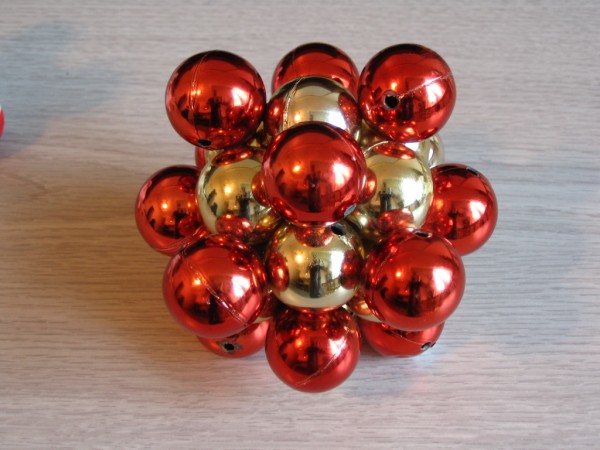
Quantum Vacuum Engineering
Frequently Asked Questions
The revolutionary nature of Quantum Vacuum Engineering, combined with its obscure theoretical background, is bound to raise lots of questions. Here you will find postings on a growing list of answers to some fundamental and critical aspects of the subject matter. Readers are also encouraged to consult our companion site dealing with the radically new Lattice Nested Hydreno atomic model which is a fundamental aspect of QVac Engineering.
What is Quantum Vacuum Engineering?
The term Quantum Vacuum Engineering was evidently first coined by Nobel Physics Laureate, T.D. Lee who suggested that the energetic vacuum of space might some day be engineered to provide fantastic new technologies of science fiction fantasy as we finally begin to comprehend the underlying, fundamentals of natural phenomena such as matter, mass, gravity, inertia and electromagnetics as they relate to the energetic quantum vacuum.
The deterministic understanding of such phenomena has just recently been greatly improved with the development of a the Lattice Nested Hydreno Atomic model, which has evidently deciphered the polyhedron based geometric code of the Periodic Table of Elements, providing logical explanations for literally thousands of unaccounted for empirical observations. With such a quantum leap in understanding, it is now possible, even mundane, to engineer the matter-vacuum interaction to draw useful energy from the ubiquitous, Zero-point energy of space. The potential benefits, are of global significance, solving numerous problems in energy procurement, transportation, the environment and society in general.
How does QVac Engineering differ from conventional Engineering?
Conventional engineering ignores the established reality of the highly energetic matter-vacuum interaction. This usually works fine for systems in steady state operation because the interaction is in dynamic equilibrium, permitting the Engineer to presume for convenience a closed system in his analysis, even though closed systems do not really exist.
Furthermore "closed system" engineers consider transient states undesirable, and often too difficult to analyze accurately, compensating for their superficial analysis with liberal fudge factors and safety margins to pad against the enigmatic behaviour of complex transients. In contrast, the QVac Engineer purposely creates rapid cycling, and preferably non-linear, asymmetric transients in order to momentarily and repeatedly alter the dynamic equilibrium state between matter and the vacuum permitting the material system to draw energy from the local vacuum flux. This can be accomplished in almost any concievable manner from mundane mechanical systems to sophisticated electronics.
How can the Vacuum be engineered?
Engineering of the Quantum vacuum is apparently accomplished in two fundamental ways using either coherence and interference interactions between matter and the Zero-Point Field (ZPF) of local, energetic space. Both phenomena alter the energy distribution of the otherwise random, isotropic ZPF of the vacuum, producing momentary transients, which alter the dynamic equilibrium of the continuous energy flow between matter and the all pervasive energy resident in space.
Coherence phenomena are characterized by radial or multilateral implosions of the ZPF toward a microscopic point or plane of space resulting in a momentary coherent flow of ZPE radiation using variations of the Casimir Effect. This well documented effect is exhibited in Cavitation bubble collapse, Sonoluminescence, Cavity Quantum Electrodynamics (CQED), Hydroxy gas implosion and other means. The coherent flow of predominately longitudinal (scalar) ZPE is consequently transduced into conventional transverse thermal radiations through interactions with matter or directly through scalar wave interference. The Casimir effect evidently plays a critical role in most QVac Engineered devices.
What is Zero-Point Energy?
Zero-Point energy (ZPE) is generally regarded as the high end of the EM spectrum beyond hard gamma and cosmic rays at frequencies above 1022 Hz, possibly extending to 1044 Hz according to the wave particle duality equation of Nobel Laureate Louis de Broglie. This primordial energy of the vacuum is all pervasive and is thought by advanced theorists to underpin every aspect of the material Universe. The ZPE field is not detectable using conventional instruments due to the fact the electrons do not respond to frequencies above 1022 Hz. Many assume that the EM spectrum ends at ~1022 Hz with "cosmic" rays but this is certainly not the case. The existence of the ZPE spectrum has however been verified by various coherence and interference phenomena including the CASIMIR Effect.
What is the Casimir Effect?
The Casimir Effect is mysterious attractive, or more correctly, impelling force that develops between closely spaced metalic or dielectric plates in the "empty" vacuum of space. The initial onset ocurrs at about 1 micron but rapidly escalates in accordance with the inverse of the forth power of the spacing between them. For instance the force increases by a factor 10,000 (104) times when the plate spacing is reduced by a facor of 10 from say 1 to 0.1 micron and so on. The net impelling radiation pressure that drives them together is due to ZPE frequencies being shielded out because the longer wavelengths cannot exist between the plates which constitute a microscopic faraday cage (This is the reason why radio antennas are located outside the metal envelope of a car).
The Casimir Effect was first theorized by H. Casimir in 1948 and has been accurately varified on several occasions to be within 1% of Casimir's equation. The Casimir effect also manifests itself in many other situations involving microscopic voids in molten metals and cavitation bubbles in dielectric fluids such as water. The Casimir force is a central feature of the revolutionary LATTICE NESTED HYDRENO Atomic Model. The Strong force of the nucleus is conjectured to be an ultra-close range Casimir effect which literally holds the nucleus together from the outside by virtue of the net impelling, ZPE radiation pressure of the vacuum.
What are Quantum Vacuum Fluctuations?
Quantum Vacuum Fluctuations are essentially a momentary, spontaneous organization of the otherwise random, isotropic energy of space; essentially variation in the density of ZPE. The terms Vacuum Fluctuations and ZPE are frequently used interchangeably with some understandable confusion given that QVac fluctuations are essentially just an organized form of ZPE. As the subject matter becomes better defined, the nomenclature and usage should hopefully become more consistant. It is probably best to think of Quantum Vacuum fluctuations as a naturally coherent manifestation of ZPE arising from the otherwise random flux of the ubiquitous Zero-Point Field.
What do you mean by ZPE coherence?
What is meant by coherence, is that the otherwise random Zero-point energy of the quantum vacuum is persuaded by clever means to become organized in a defined region of space so as to produce net effects that can be used to power a load, or provide field effect propulsion without a material reaction medium. New Energy sources, Control of Gravity and Inertial forces are consequently possible. There are infact many existing devices which produce such effects although very few, so far that have managed to make it to the point of commercialization. Coherence is however generally challenging to produce because of the transient, non-equilibrium, non-linear conditions that must be set up between the material system and the enegetic vacuum flux.
This all seems too incredible to believe! How come I haven't heard of it before?
There is actually a lot of information available if you know what to look for and where. Topics dealing with ZPE and Vacuum fluctuations can be found in the peer reviewed literature, but are largely ignored by the vast majority of scientists still entrenched in the "empty" space concept made popular by Einstein's Special Relativity. The biggest problem is censorship of the popular media, which historically resists publicizing revolutionary ideas.
The UPI news agency actually has an official standing policy dating back to the mid 20th century to refrain from publishing anything outside the confines of mainstream peer reviewed scientific journals. Peer review certainly has its place, but it also effectively prevents publication of revolutionary concepts that might pose a threat to the established dogmas and "old boy" networks of the "science industry". The advent of the information age has certainly improved things a lot, but even the internet is now experiencing a degree of censorship as popular search engines choose not to list certain topics.
© 2006 - 2012


Neutron Decacores
Science & Engineering - Out of the Box
About The Author
Mark Porringa is a professional engineer and decorated "veteran" of the Nuclear industry including 15 years at a major research reactor.
Frustrated with the growing limitations of the indeterminate nature of nuclear science and engineering, he began a 10 year quest that culminated in the development of a new atomic model and low energy fusion experiments.
Mark's research has been reported in the peer reviewed literature, including invited presentations before the prestigious Louis de Broglie Foundation in Paris and the Canadian Nuclear Society.
Mark Porringa is a professional engineer and decorated "veteran" of the Nuclear industry including 15 years at a major research reactor.
Frustrated with the growing limitations of the indeterminate nature of nuclear science and engineering, he began a 10 year quest that culminated in the development of a new atomic model and low energy fusion experiments.
Mark's research has been reported in the peer reviewed literature, including invited presentations before the prestigious Louis de Broglie Foundation in Paris and the Canadian Nuclear Society.
LNH Atomic
Model
Model
QVE DIRECTORY
Aluminum Nucleus
LNH ATOMIC MODEL
LNH ATOMIC MODEL
Updated Jan 21/12

































